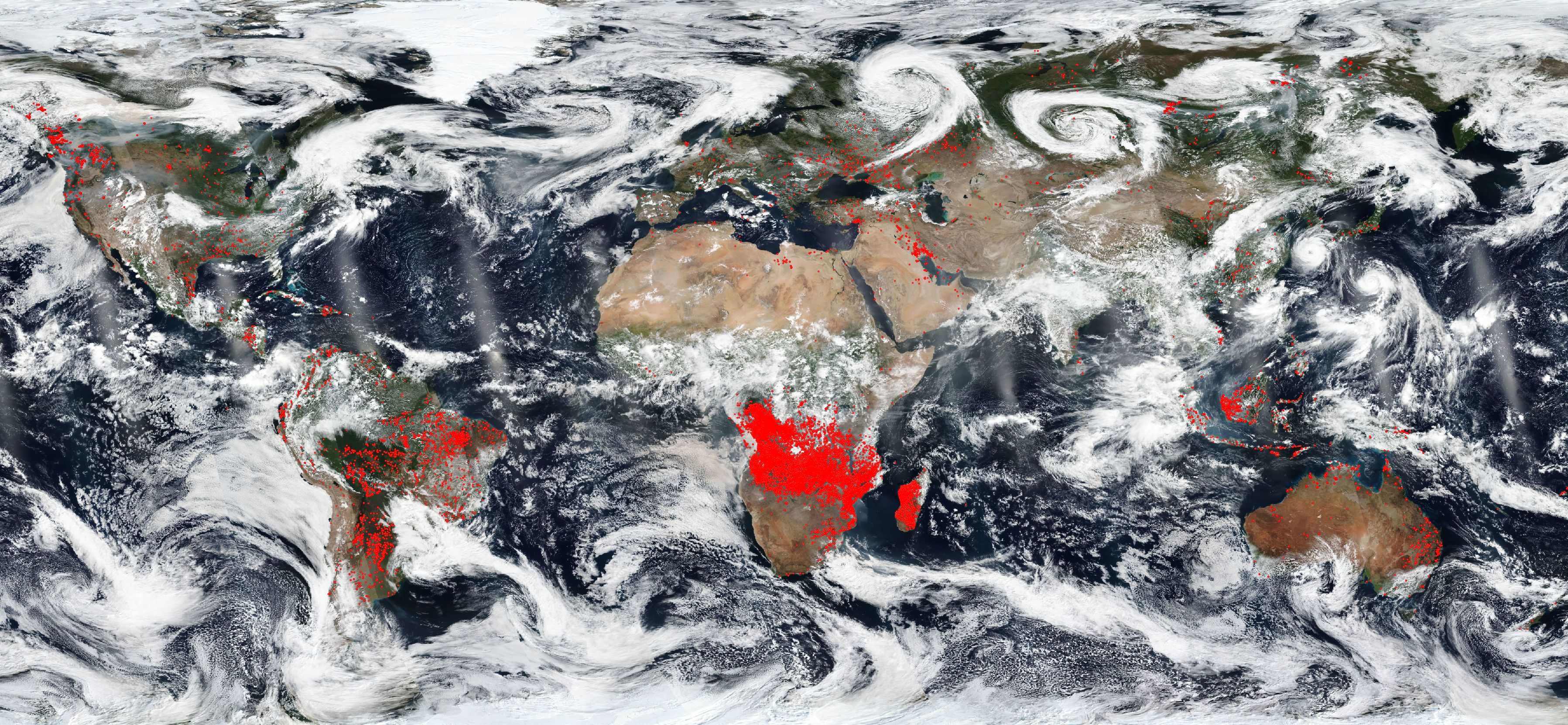A Whole Lot of the Planet Is on Fire Right Now

A whole lot of planet Earth is burning right now.
In the U.S., record-setting wildfires in Western states dominate the headlines. But as a new image released by NASA's Worldview satellite imagery collection reveals, those fires represent just a fraction of the total portion of the planet that's dominated by fire right now. The image highlights in red all of the regions of the planet where satellites currently detect active fires — though NASA noted in a statement that not all of those red points are necessarily wildfires.
"Africa seems to have the most concentrated fires," NASA officials said in the statement. "This could be due to the fact that these are most likely agricultural fires ... Farmers often use fire to return nutrients to the soil and to clear the ground of unwanted plants."
So not all the fires in this burning world are out of control. But "while fire helps enhance crops and grasses for pasture, the fires also produce smoke that degrades air quality," NASA added.
And Africa hardly accounts for all of the flare-ups visible on this map.
North and South America, as well as Australia, have had widespread — and sometimes record-setting —wildfires this year, NASA officials said, as a result of warming temperatures and droughts linked to climate change, as well as forest mismanagement in some areas.
"For large areas in the north and west [in Australia]," NASA said, "bushfire season has been brought forward a whole two months to August — well into winter… According to the Australian Bureau of Meteorology … the January to July period 2018 was the warmest in [New South Wales] since 1910. As the climate continues to change and areas become hotter and drier, more and more extreme bushfires will break out across the entire Australian continent."
Get the Space.com Newsletter
Breaking space news, the latest updates on rocket launches, skywatching events and more!
In an email to Live Science, NASA spokesperson Lynn Jenner said that the agency does not have an exact figure for the portion of the global landmass on fire at this time.
Originally published on Live Science.
Join our Space Forums to keep talking space on the latest missions, night sky and more! And if you have a news tip, correction or comment, let us know at: community@space.com.

Rafi wrote for Live Science from 2017 until 2021, when he became a technical writer for IBM Quantum. He has a bachelor's degree in journalism from Northwestern University’s Medill School of journalism. You can find his past science reporting at Inverse, Business Insider and Popular Science, and his past photojournalism on the Flash90 wire service and in the pages of The Courier Post of southern New Jersey.










